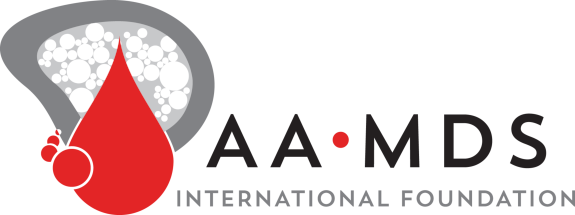What is Pure Red Cell Aplasia or PRCA?
There are three types of PRCA:
Acquired Pure Red Cell Aplasia: This is a very rare condition and usually affects adults. It is characterized by an absence of red cell precursors (reticulocytes) in the marrow and a low red blood cell red blood cell: The most numerous type of blood cell in healthy people. Red blood cells contain hemoglobin, a protein that picks up oxygen in the lungs and brings it to cells in all parts of the body. Also called erythrocyte, RBC. count. The amounts of white blood cells and platelet platelet: The smallest type of blood cell. Platelets help the blood to clot and stop bleeding. Also called a thrombocyte. remain normal.
Transient or Acute Self-limited PRCA: This is the most common type of PRCA. It is identical to acquired PRCA except that, at some point, it simply goes away. Transient PRCA is usually triggered by a virus or drug. In most cases, when the virus clears, or the responsible drugs are eliminated, the PRCA will disappear. This is most dangerous to patients who already have a chronic hemolytic anemia hemolytic anemia: Anemia due primarily to the excessive hemolysis or destruction of red blood cells . Patients with otherwise normal functioning bone marrow bone marrow: The soft, spongy tissue inside most bones. Blood cells are formed in the bone marrow. may even recover without having known they had it.
Inherited or Congenital Pure Red Cell Aplasia (Diamond-Blackfan Anemia): Diamond-Blackfan anemia Diamond-Blackfan anemia: A rare form of pure red cell aplasia that can be passed down from parent to child. Diamond-Blackfan anemia (DBA) is characterized by low red blood cell counts detected in the first year of life. Some people with DBA have physical abnormalities such as small head size, low frontal hairline, wide-set… is a genetic condition usually diagnosed during the first two years of life. About half of patients also have physical malformations or mental retardation. Only several hundred cases have been reported worldwide. The severity of the disease varies by patient.
Relation to bone marrow failure diseases:
The major difference between PRCA and aplastic anemia aplastic anemia: (ay-PLASS-tik uh-NEE_mee-uh) A rare and serious condition in which the bone marrow fails to make enough blood cells - red blood cells, white blood cells, and platelets. The term aplastic is a Greek word meaning not to form. Anemia is a condition that happens when red blood cell count is low. Most… is that, in PRCA, only the red blood cell line is affected, while the white blood cells and platelets remain at normal levels. In aplastic anemia, all three blood cell types are typically affected.
What causes PRCA?
The cause of most cases of PRCA is most recently thought to be autoimmune in nature. Doctors think it is caused by a mistaken attack by the patient’s own immune cells on blood-forming stem cells stem cells: Cells in the body that develop into other cells. There are two main sources of stem cells. Embryonic stem cells come from human embryos and are used in medical research. Adult stem cells in the body repair and maintain the organ or tissue in which they are found. Blood-forming (hemapoietic) stem… . There are other more rare causes as well. The risk factors for PRCA include:
- Having autoimmune disorders, such as rheumatoid arthritis, hepatitis or having a large population of clonal large granular lymphocytes which attack the red cell precursors in the marrow
- Tumors of the thymus or thymomas
- Viruses such as the parvovirus B19
- Certain inherited genetic disorders, appearing mostly in early childhood
What are the symptoms of PRCA?
By definition, all PRCA patients have anemia anemia: (uh-NEE-mee-uh) A condition in which there is a shortage of red blood cells in the bloodstream. This causes a low red blood cell count. Symptoms of anemia are fatigue and tiredness. . Symptoms of anemia can include:
- Fatigue
- Pale skin
- Dizziness
- Shortness of breath
Acquired PRCA can be caused by an underlying condition that may add other symptoms.
How do you diagnose PRCA?
Tests and tools doctors use to diagnose PRCA include:
- Physical exam and history
- Blood tests:
- A complete blood count with a differential that looks at the total number and type of blood cells in your blood
- A reticulocyte reticulocyte: An immature red blood cell. Reticulocytes are normally found in the bone marrow. They are present in the bloodstream only in very low numbers. count to determine blood levels of young red cells
- A blood smear so your doctor can look at your blood under a microscope
- Bone marrow examination, including aspiration and biopsy to see how your bone marrow looks (required for diagnosis)
Patients should consult a hematologist hematologist: (hee-muh-TOL-uh-jist) A doctor who specializes in treating blood diseases and disorders of blood producing organs. who has experience with bone marrow failure bone marrow failure: A condition that occurs when the bone marrow stops making enough healthy blood cells. The most common of these rare diseases are aplastic anemia, myelodysplastic syndromes (MDS) and paroxysmal nocturnal hemoglobinuria (PNH). Bone marrow failure can be acquired (begin any time in life) or can be… diseases. If a rheumatoid disorder is responsible, a rheumatologist should also be consulted.
What is the treatment for PRCA?
The treatment goal is to restore red blood cell production and to treat any underlying disorder. The most common treatments are:
- Blood Transfusions to increase red blood cell levels. Patients who don’t respond to other treatments may need to rely on transfusions on an ongoing basis.
- Corticosteroids, like prednisone prednisone: Prednisone a man-made version of a hormone produced naturally by the adrenal gland that can help reduce inflammation and stop allergic responses. It is prescribed when the body is not producing enough of this chemical on its own. How does it work? For PNH, it may be used to decrease… , are often the initial treatment for PRCA. Unfortunately, the large doses that are often required can have severe side effects. For that reason, corticosteroid medications are rarely used alone as a treatment.
- Immunosuppressive therapy may be used if the underlying cause of the PRCA is immunological and the patient hasn’t responded to corticosteroids. Drug therapies include cyclophosphamide cyclophosphamide: Cyclophosphamide is in a class of medications called alkylating agents. When used to treat cancer, it works by slowing or stopping the growth of cancer cells in your body. When cyclophosphamide is used to treat bone marrow failure, it works by suppressing your body's immune system. , cyclosporine cyclosporine: Cyclosporine is used along with antithymocyte globulin (ATG), another immunosuppressant, for treating aplastic anemia and some other forms of bone marrow failure. , azathioprine with or without corticosteroids, and anti-thymocyte globulin. In some cases, rituximab may be effective. PRCA caused by viruses (especially B19 parvovirus) is treated with immunoglobulin infusions. Thymoma-associated PCRA has to be treated with surgical removal of the thymoma. There is a significant relapse rate after immunosuppressive therapy immunosuppressive therapy: Immunosuppressive drug therapy lowers your body's immune response. This prevents your immune system from attacking your bone marrow, allowing bone marrow stem cells to grow, which raises blood counts. For older patients with acquired aplastic anemia, immunosuppressive drug therapy is the… , but treatments can be repeated.


